After a great breakfast at the hotel, we put on our final layers (1 for Jeff, 4 for Donna), secure our packs in their rain covers and head out for Estella. It’s about 60 degrees and raining for the first four hours. Since we couldn’t take out our cameras, I’ll just tell you that we walked through thousands more acres of wheat fields…and mud. It's beautiful, definitely, just not very different from the landscape yesterday. There are a few small vineyards in this area. We met our first Aussie on the trail today. Clayton is from Melbourne and is hiking by himself. Though he says, “You never really hike alone on the Camino.” He’s right, if you want to visit with others, you can always adjust your pace and fall in for a few miles of conversation or join a crowded pilgrim table at a cafe. We also met a young man from south London who told us he’s mapping all the Americans he meets on the trail. We were his first Arizonians.
We were so astounded to see this cactus that we thought we had better capture a picture or no one would believe it was growing here in the rain. We’ve never seen one survive outside an arid climate, but this one is clearly blooming it’s heart out!
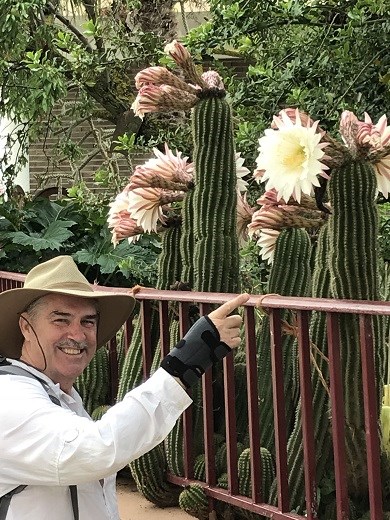
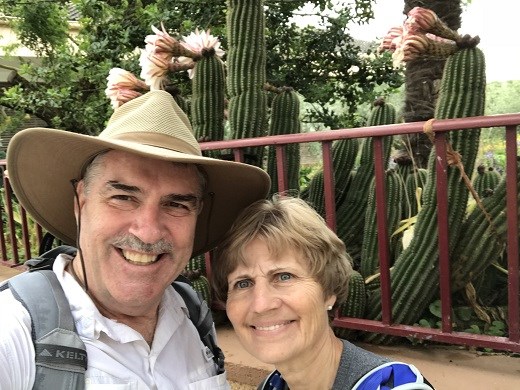
As we neared Estella we met Scruffy. From the left: Jeff, Donna, Scruffy. Thought I better add names, since we all look scruffy after walking 14 miles today in the rain, mud and humidity!
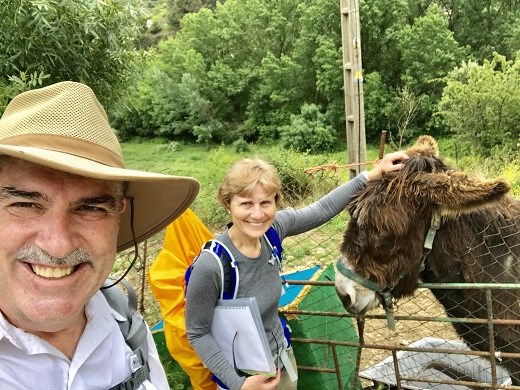
The Church of the Holy Sepulchre sits at the entryway to Estella. Construction was begun in the 12th Century and completed in the 14th. The Romanesque structure took on some Gothic design elements in the later construction work in the 14th century, during the Gothic period.
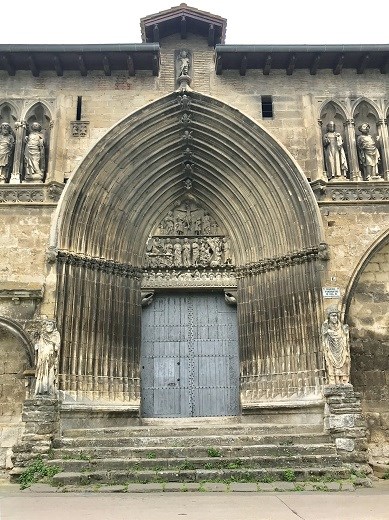
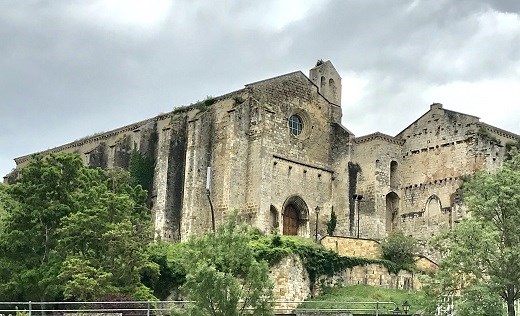
Jeff stopped at this fountain to dunk his head before our final leg in to Estella. I washed some Scruffy off my hands…
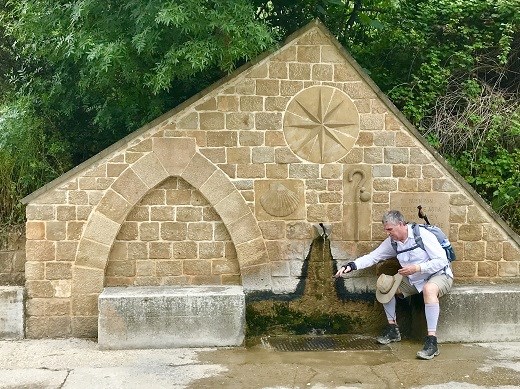
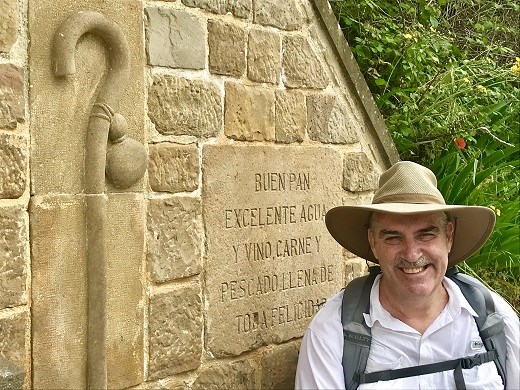
We cross the River Ega on the Prison Bridge as we enter Estella. The bridge was built in the 12th century and originally used to support farmers transporting livestock and produce to a thriving marketplace in Estella. It was later named the Prison Bridge as a prison was built adjacent to the bridge.
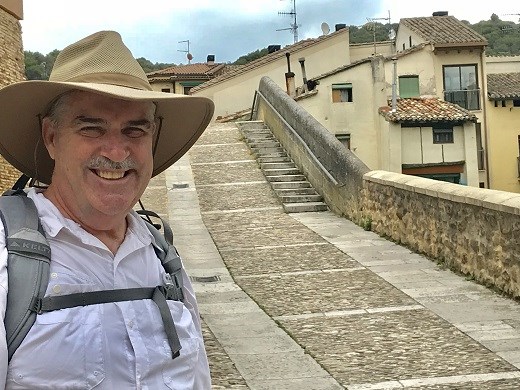
This residential high-rise is just across the Prison Bridge. I don’t think those clothes hanging out are going to get dry today! Notice how muddy the River Ega is today due to the rainstorms.
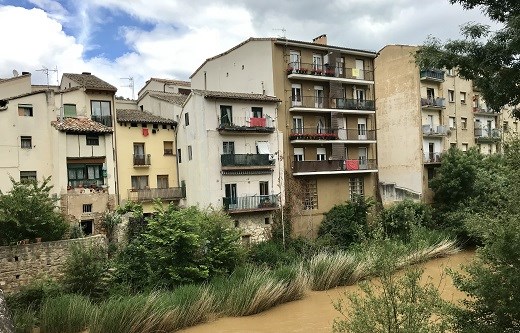
The Chapitel was the hub for commerce and government in 1266. It housed wool carders, shoemakers, wheat, salt and was where coins were minted. It was also the location of public executions. The bodies were then dumped into the River Ega in wooden tubs. Gruesome! It’s now a lovely view outside our hotel window.
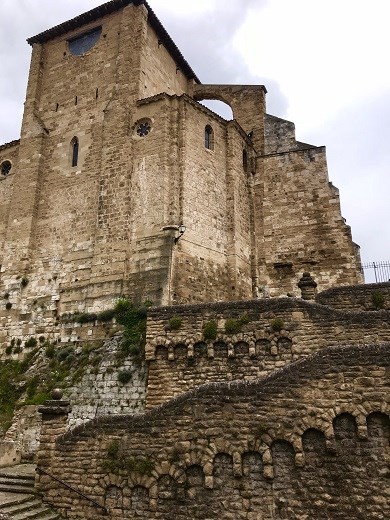

We head to Los Arcos in the morning!